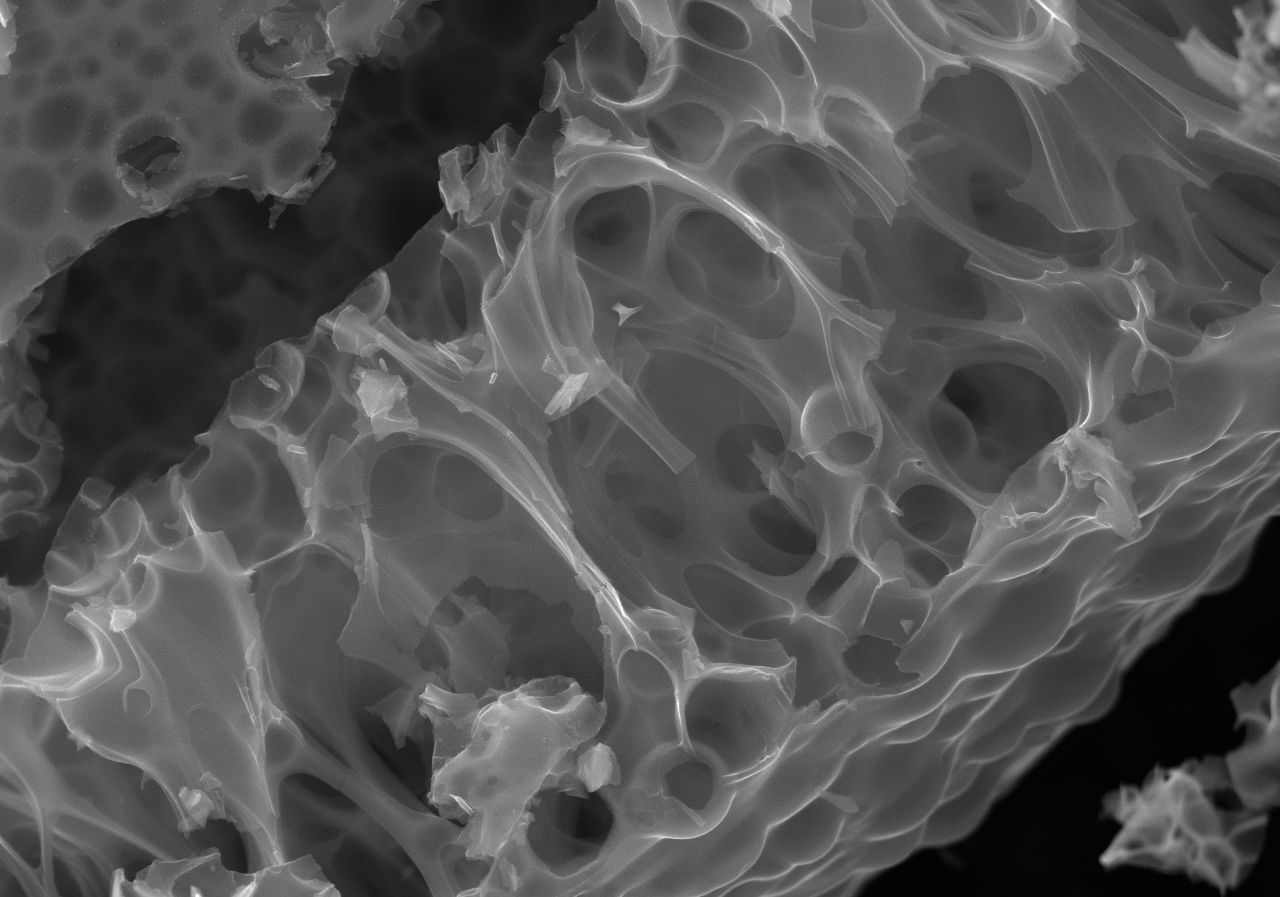
A UK-China-Japan collaboration led by Dr Zoe Schnepp has shown that materials as simple as gelatin can be used to make high performance catalysts. The research is published in the Journal of Materials Chemistry A.
In applications such as fuel cells, new materials are required that don’t rely on expensive and scarce elements like platinum. Nitrogen-doped nanostructured carbons offer an interesting alternative but these are often prepared from relatively expensive reagents or hazardous synthetic methods. The beauty of this new material is how easy it is to make. It uses gelatin – the same gelatin that is used to make jelly or jello. The gelatin is mixed with iron and magnesium nitrates and in a single heating step is converted into a foam-like composite of carbon with magnesium oxide and iron carbide nanoparticles. Iron carbide is crucial because it catalyzes the conversion of amorphous carbon to onion-like graphitic carbon layers. The nanoparticles can then be easily dissolved to produce hollow graphitic shells within the foam. Exposed graphitic edge planes are believed to be critical in catalytic activity of these materials.